Photo Essay: Spokane Trans Day art show draws big crowd
Photos and News Story by Gen Heywood | FāVS News
The Spokane Public Library Central branch looked the same as any other Saturday. There were no signs for the Trans Day of Visibility Art Show on the doors. No signs were set up directing visitors to the special presentation to take place from 1-4 p.m. that day (March 29).
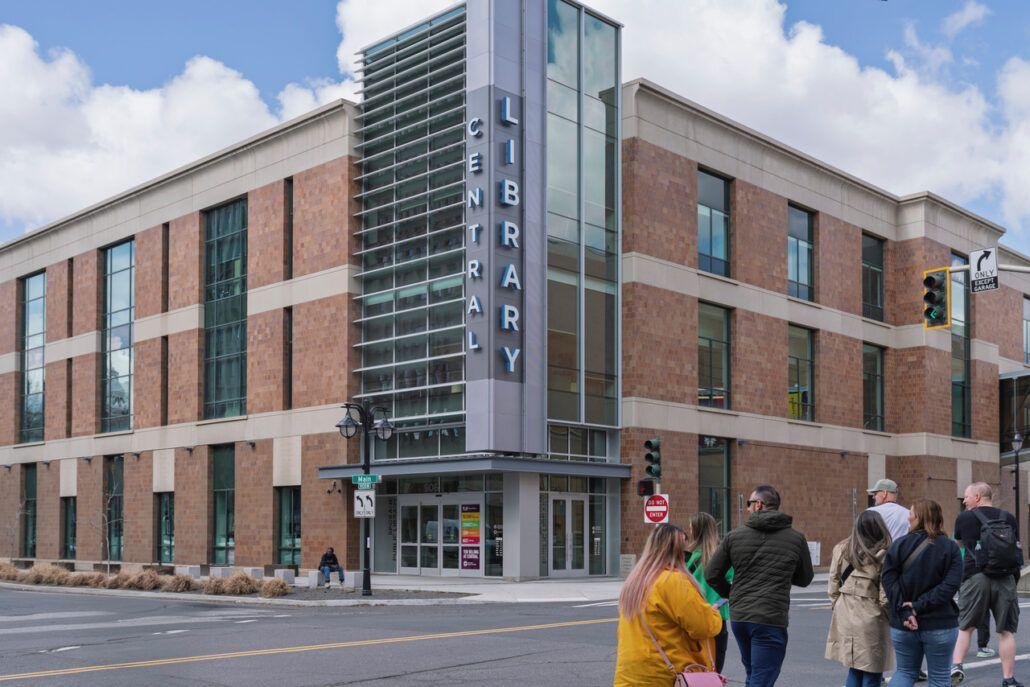
After checking in at the information desk, the simple directions were to go up to the third floor to the nxʷyxʷyetkʷ Hall. Once at the top of the stairs, the laughter of trans artists, their allies and art lovers could be heard. This was the place.
After the first hour, Trans Spokane Executive Director Louis Stay estimated that 100 visitors had met these local artists. By the event’s end, more than double that had attended.
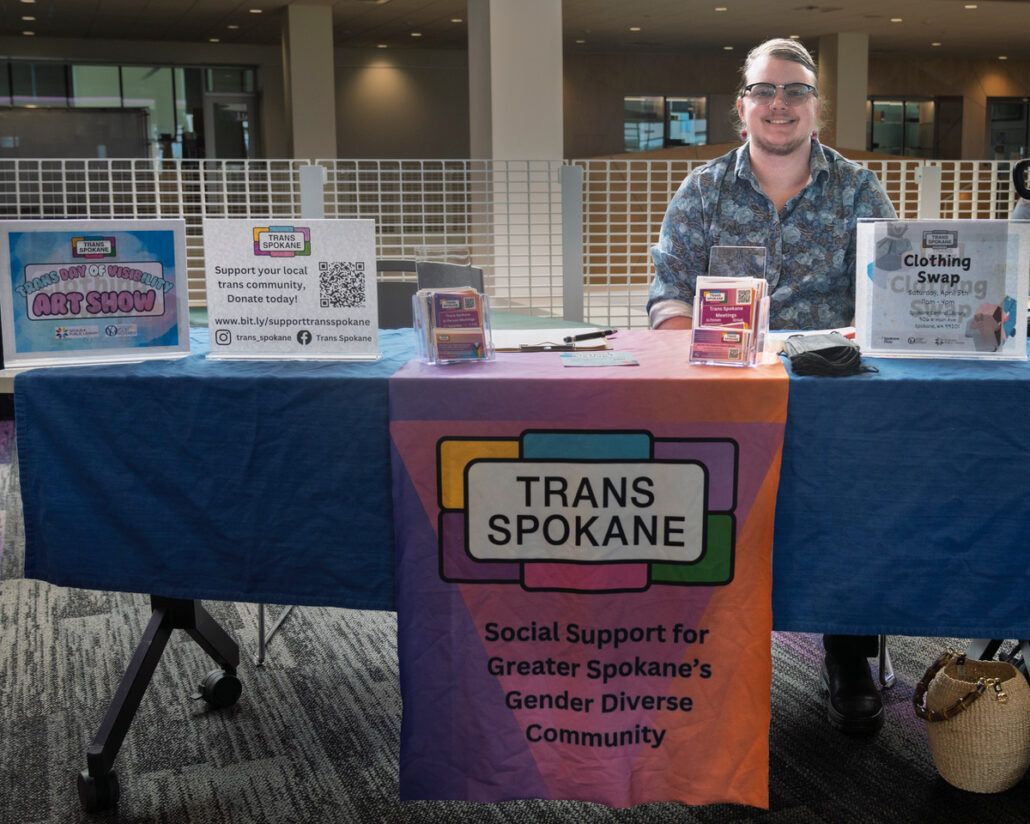
“It’s just important to have these kinds of events for Trans Day of Visibility because it shows that we’re here, we’re out here, our community participates in the arts,” Stay said, as they reflected on the crowd that had shown up.
They also talked about how art has been a way for trans and gender-expansive people to describe their lives and said, “All sorts of emotions and experiences [are] portrayed through the art.”
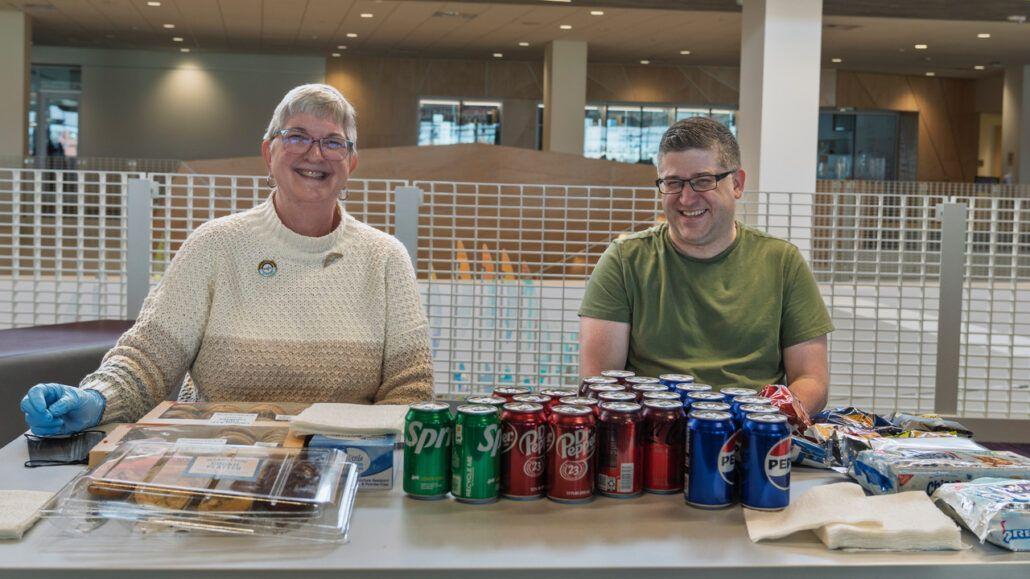
Kelly Cuilla said she was there at the event because it is important to show up. As a mom, she said she wanted to share the message that “trans families are important and need to be noticed.”
Odyssey Youth Movement Executive Director Ian Sullivan sat with Cuilla at their edible art display, where they gave out free cookies and food.
Sullivan’s organization also co-sponsored the event with the Spokane Public Library and said that as a representative of Odyssey he believed it was important for them “to support a partner organization and stand with trans folks of all ages.”
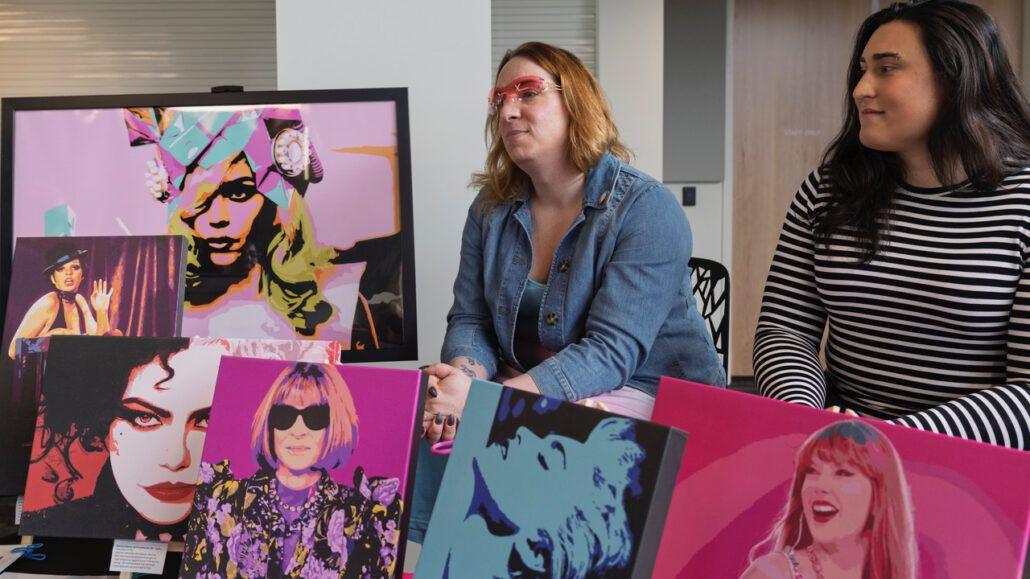
While sharing her art, Charlotte Lawrence spoke about the importance of Trans Day of Visibility because “visibility is power.”
“Right now the country that we live in is trying to tell everybody else that we don’t exist and we never have,” she said.
She spoke about how showing up is also a power.
“We are here. We exist,” she said.
Lawrence has been drawing since she was 11 and credits a teacher who helped her at age 13 to learn the fundamentals of art. Thirty years later after first meeting this teacher, Lawrence still talks with her everyday.
She chooses strong women to paint like Liza Minelli, Madonna and Princess Diana because she said these were women who lived in “such a profound positive way that helped to inspire me to be the woman that I have become.”
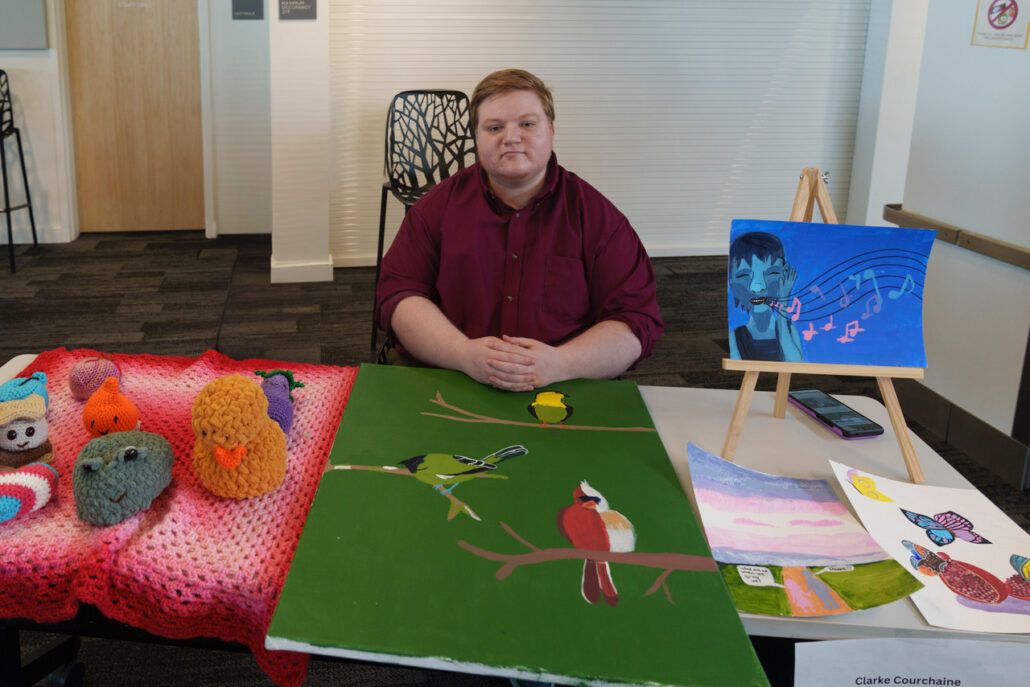
Clarke Courchaine’s art has grown out of their interest in science.
“I am a student studying biology, and one of the arguments that I’ve encountered is transgenderism doesn’t occur in the wild,” Courchaine said. “That is inherently false.”
Their painting of three birds exhibit signs of gynandromorphism, or male birds that exhibit female traits or vice versa. They also painted butterflies who exhibit this combination of traits.
“I wanted to show that there is a variety of sex and gender differences in nature outside of just humans,” they said.
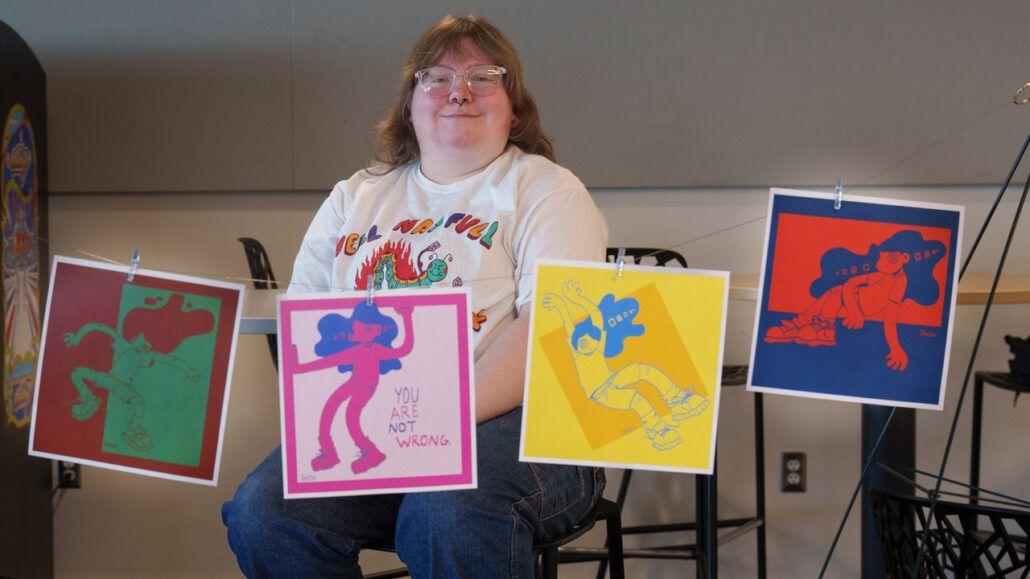
Teathy, a digital artist who goes by their first name, loves working with colors and mostly monochromatic color palettes. They brought their series called “Rubber Girl.”
“I’ve been really enjoying doing these. It’s very different from what I normally do and it’s easy and fun,” they said.
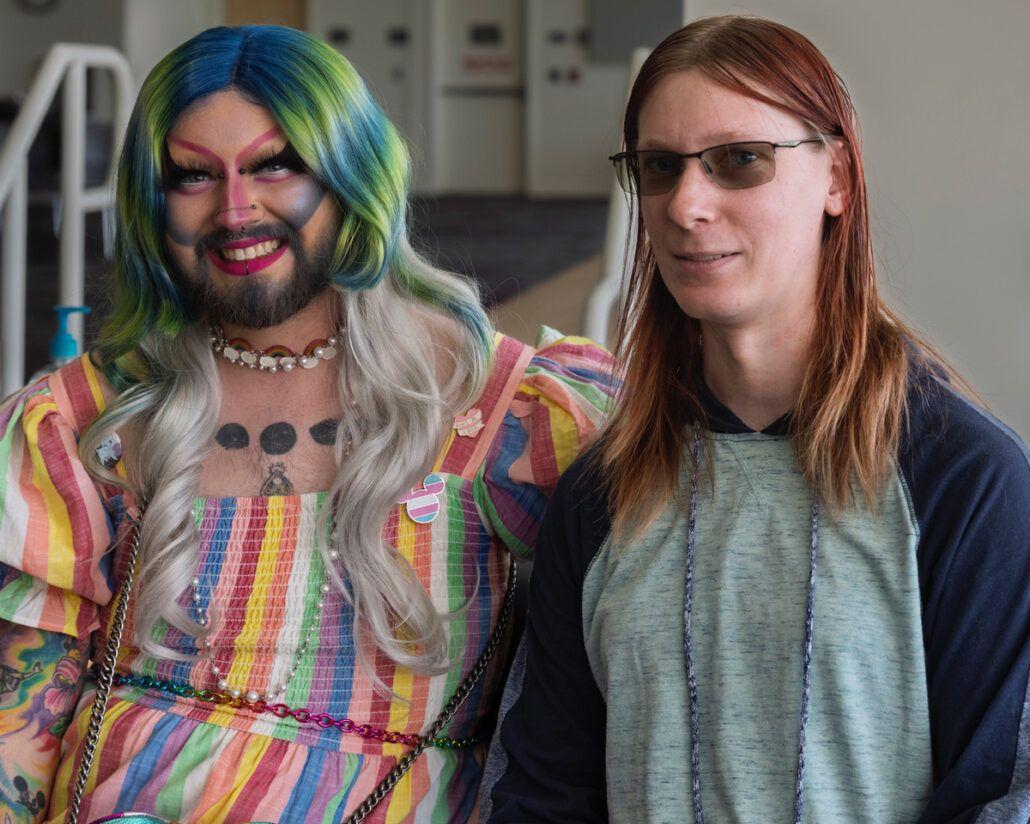
Venus Flytrap attended the Trans Day of Visibility Art Show celebrating their drag style, which they perform all over the Pacific Northwest.
“What I’m doing at the Trans Day of Visibility Art Show is really showcasing my makeup skills and trying to basically build a business with the transgender community and helping them feel more beautiful in their own skin through makeup,” they said.
Flytrap said makeup transformed people who came in looking gray into someone who left glowing.
“That’s my favorite part of doing this,” they said.
Venus also commented on how supportive the visitors had been.
“I love this community here,” they said. “It’s so welcoming and just loving and safe.”
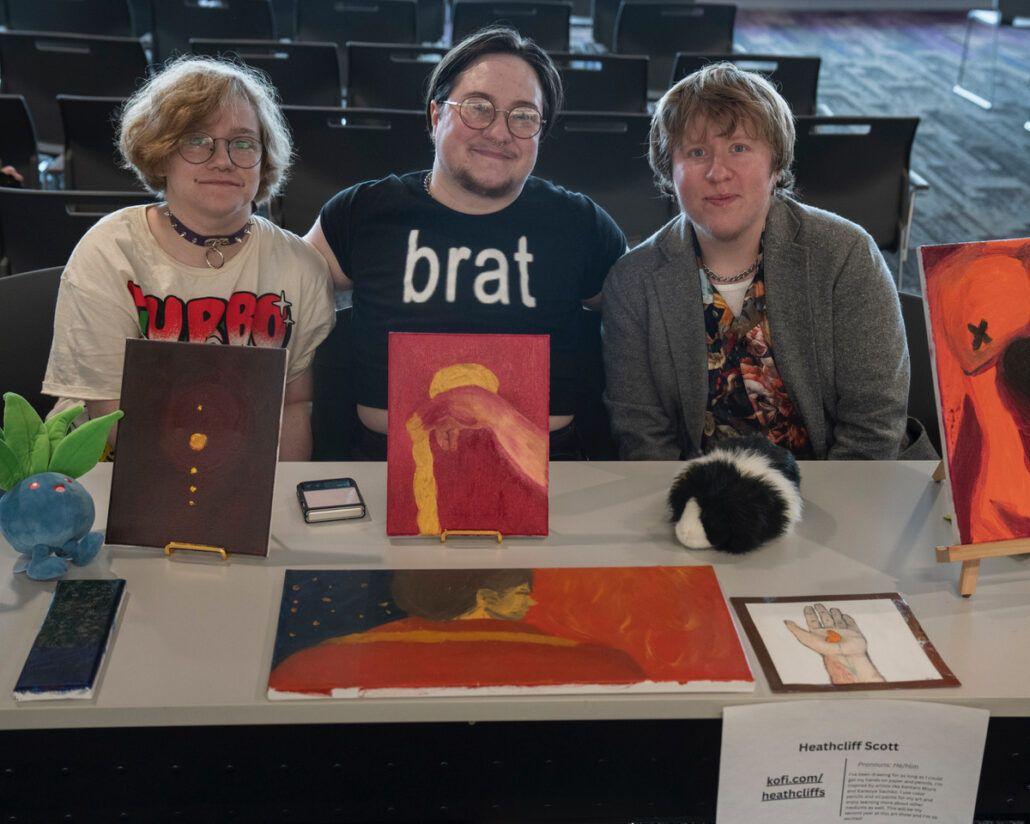
Heathcliff Scott, like many of the artists at the event, had been drawing since elementary school years.
“I’ve never really stopped, and I’ve never really wanted to because drawing is how I expressed myself and how I expressed by imagination,” Scott said.
He finds himself trying to “describe the indescribable” through his art.
“My art is mostly either self exploratory or purely aesthetic,” he said. “I find that painting can help me relieve some [emotions] and express some of them in ways that our pure verbal language doesn’t quite work.”
Camryn Carter, Heathcliff’s fiance, sat beside him and his showcase of art to support him.
“I really love getting to see him express himself through his art, and it’s really powerful to see him share that with other people and see how they respond,” they said.
Felix Fenwick shared the booth with Scott. He said he uses art as a meditative process to work on themes that are challenging to him.
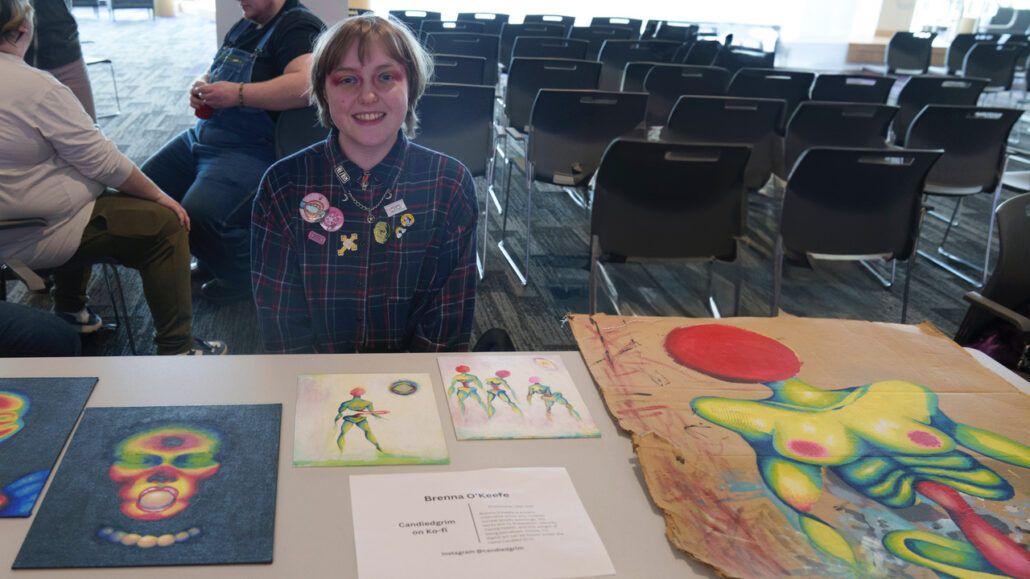
Brenna O’Keefe is a trans artist who came to Spokane from California in 2020. He began all the art pieces for this show while in high school and finished them for this show.
“I was working through my gender dysphoria without even realizing it,” he said.
Some people had noticed the sadness in the pieces that he had not noticed. Now he sees this more clearly.
“All my pieces are about identity, and I don’t name my stuff because I just kind of work through my emotions by painting,” he said.
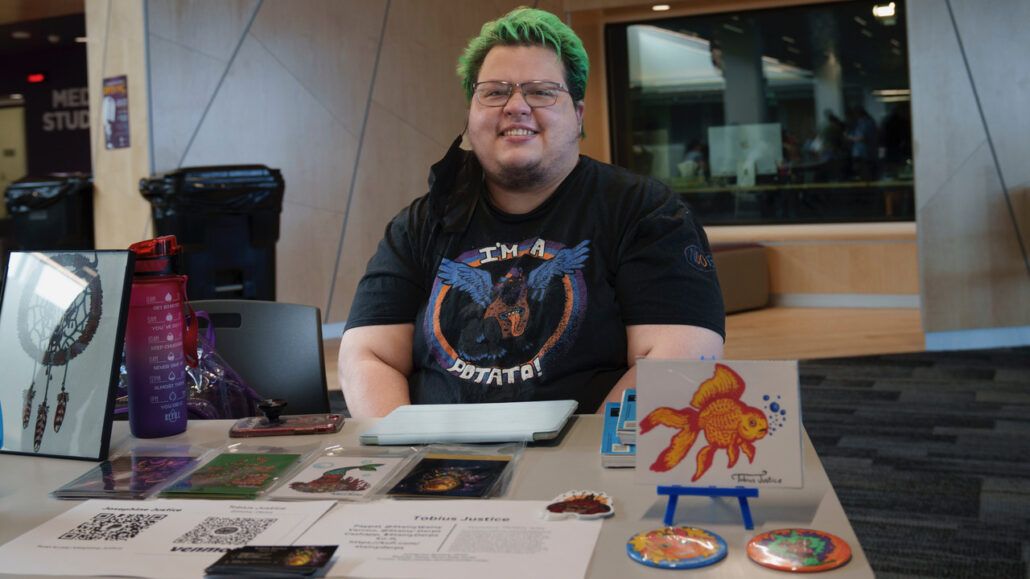
Tobius Justice said they are a character artist.
“I focus on characters for the most part. I can do backgrounds. I’ve done paintings of florals and graphic design. But I’m mostly a person who makes characters,” he said. “I am indigenous Native American artist, and occasionally I like to do Native American themes. Back when I was in high school, I made coloring sheets of traditional dancers, and I’m really proud of that.”
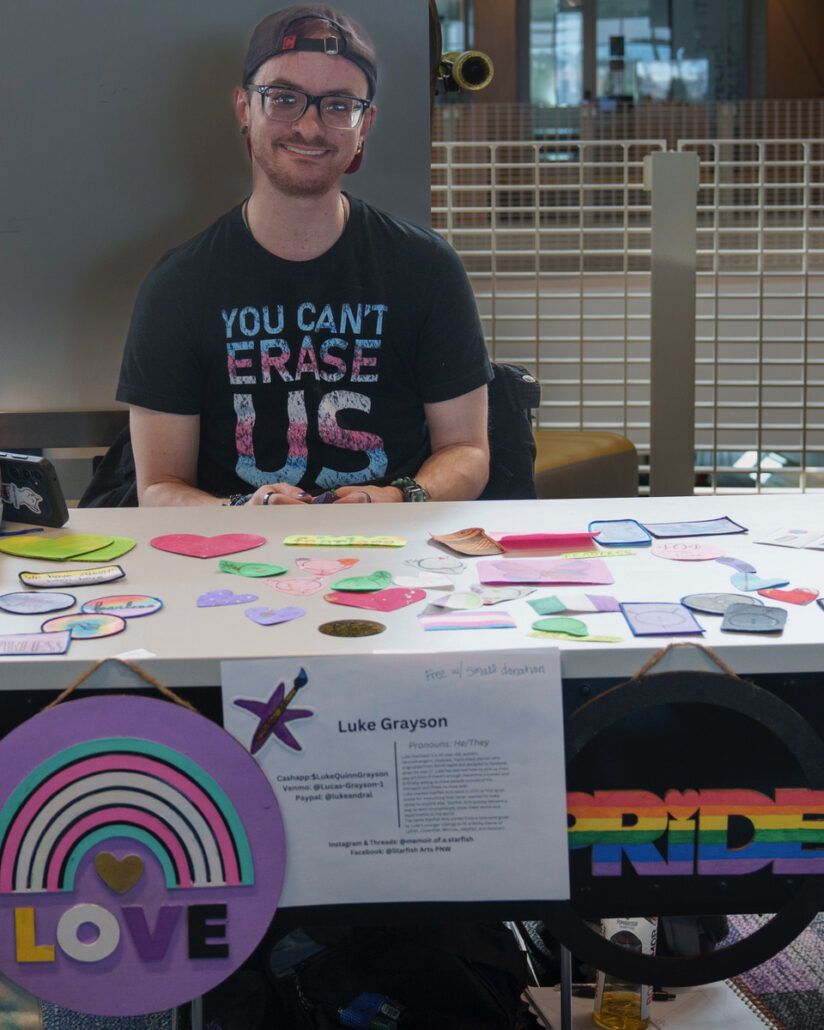
Luke Grayson had an eclectic table of his art.
“I kind of just create whatever I feel like at the moment like these patches were a hyper fixation from ADHD, and that was what I focused on for probably the last like month,” Grayson said. “Then I also do custom shoes and hats and signs and pretty much any art form that I decide to try, and I’m usually pretty good at them.”
He hopes his trans patches will help others so that when they see the patches, they will feel less alone.
He has also written three poetry books.
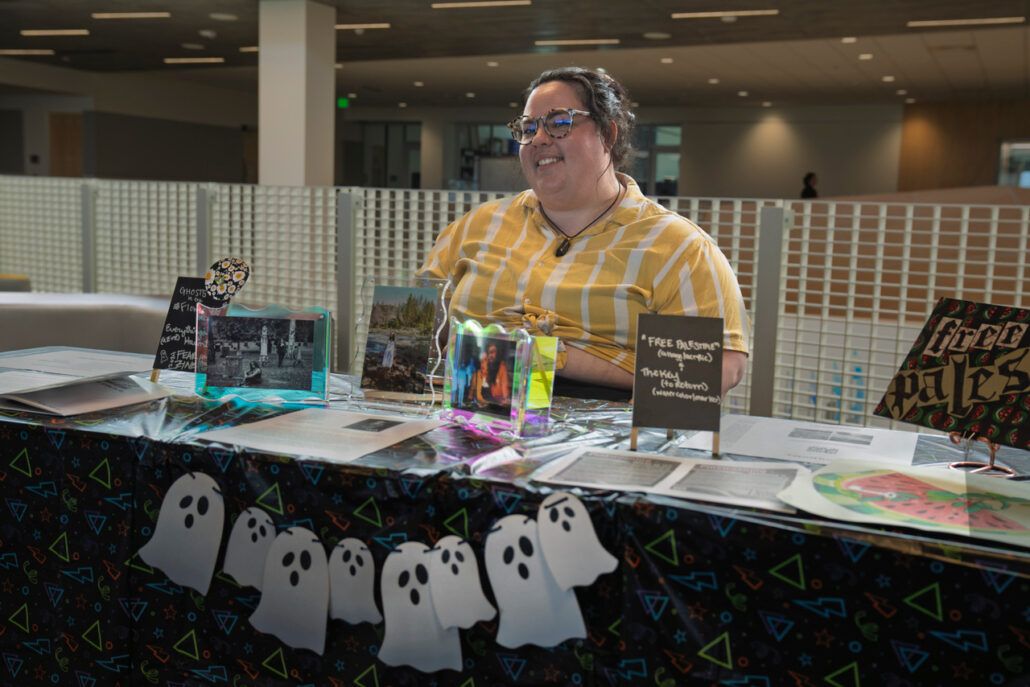
Lou (Skyler Louise) shared the art of the paranormal photography along with their activism art to raise concern for the people of Palestine.
Their primary reason for being at the Trans Day of Visibility Art Show was “because I most recently published myself a zine full of creative writing from my 20s, and that’s my pride and joy right now.”
Their work is half concerned with hauntings with the other half being less ghostly.
“It’s political. It’s activism. It is free Palestine,” they said.
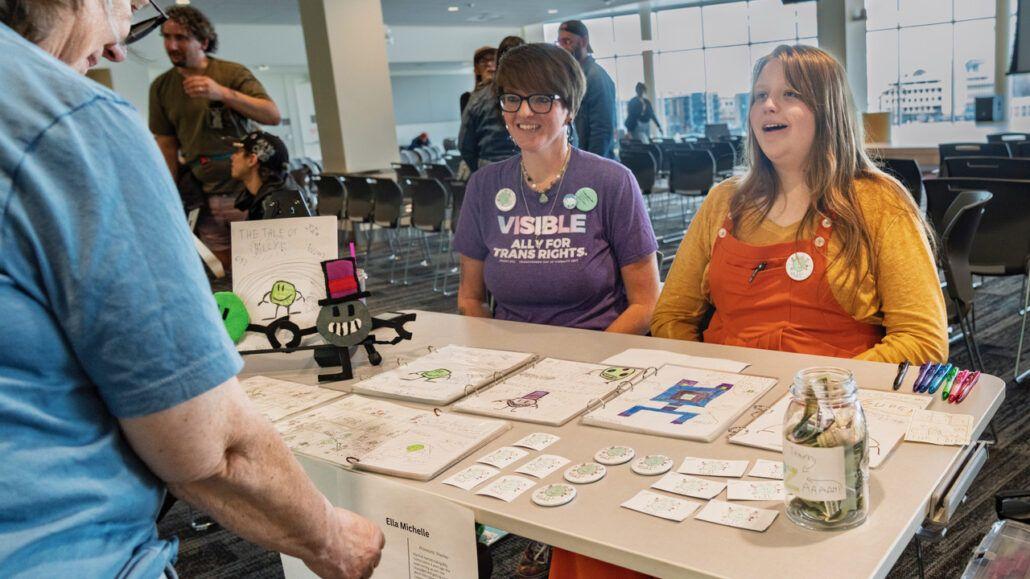
Ella Michelle Seaton started making comics four years ago at the age of 10 when she began her original “Billy Comics” series. She says started making the comics based off of her friend’s character that grew into Billy.
“I did some designing. I hated most of them but then one of them just stuck out enough, which is the birth of Billy,” Ella Michelle Seaton said. “I had my little journal and I would write in it, just little comics about everything Billy goes through.”
The character has grown with Ella Michelle Seaton. Billy now has a girlfriend named Billette and a friend named Ron. She said the next comic book in process is heavily inspired by Wanda Vision.
Elbe Seaton sat next to her daughter. She spoke of how proud she is to be Ella Michelle Seaton’s mother. She can see her daughter light up when people tell her they love seeing her characters and art.
“Watching her interact with people who are coming over and asking about her comics,” Elbe Seaton said, “has been a huge confidence boost for her.”
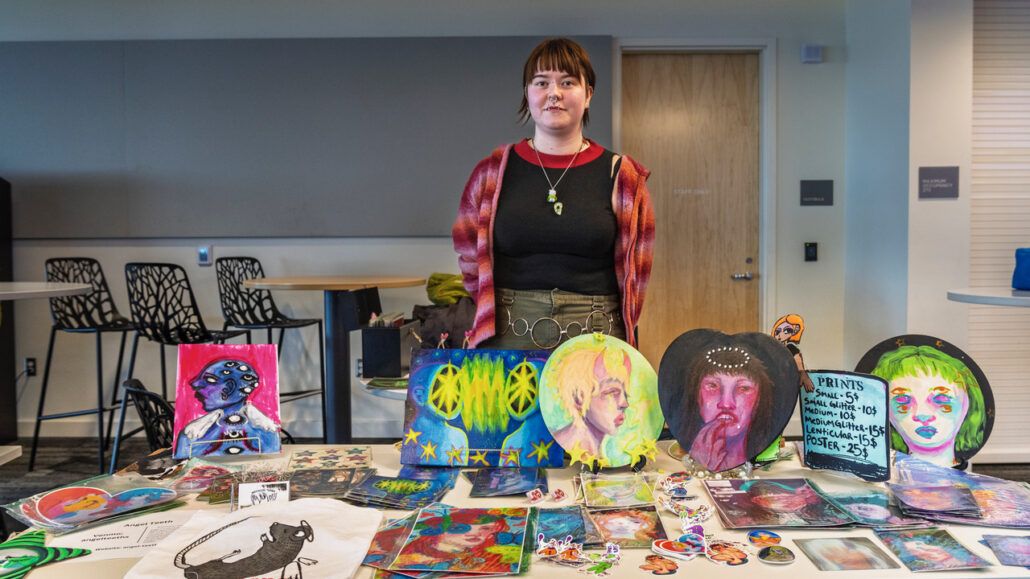
Angel Teeth said they create art that comes from dreams and random ideas. Their preferred medium is acrylic paint because of the variety of qualities it can provide.
Teeth’s disability inspires much of their newer art.
“I became disabled when I was 18,” they said. “I had two back surgeries. So I do a lot with spine-related stuff like that.”
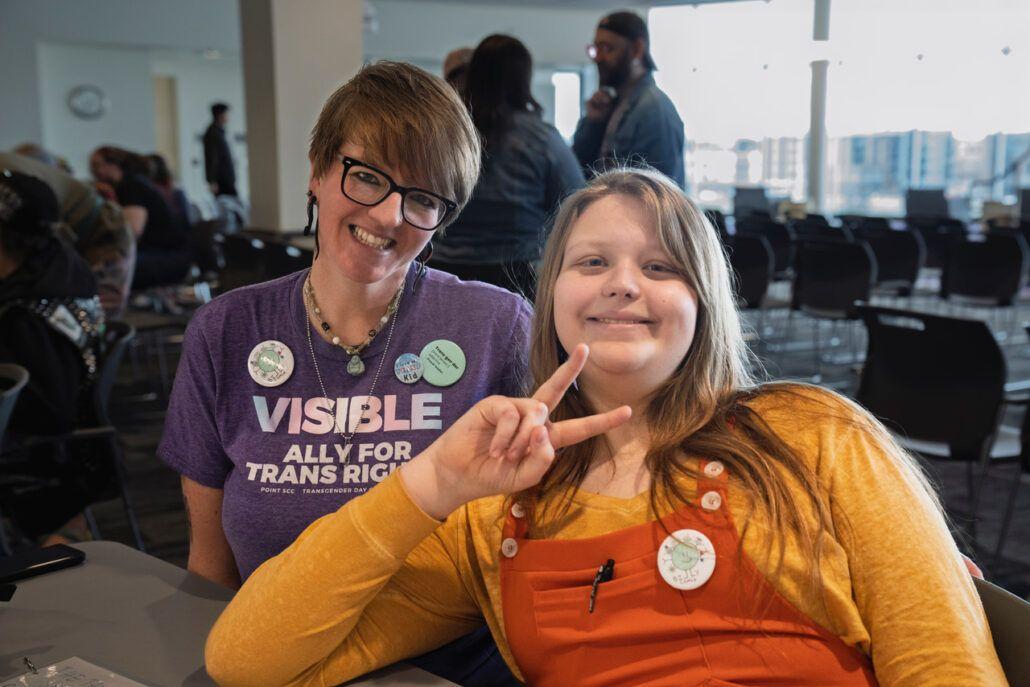




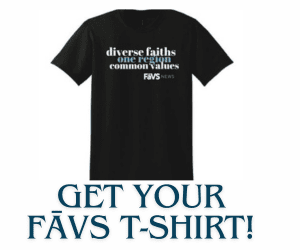



Thanks for reporting on this important testimony to the vibrancy of the trans community in Spokane.